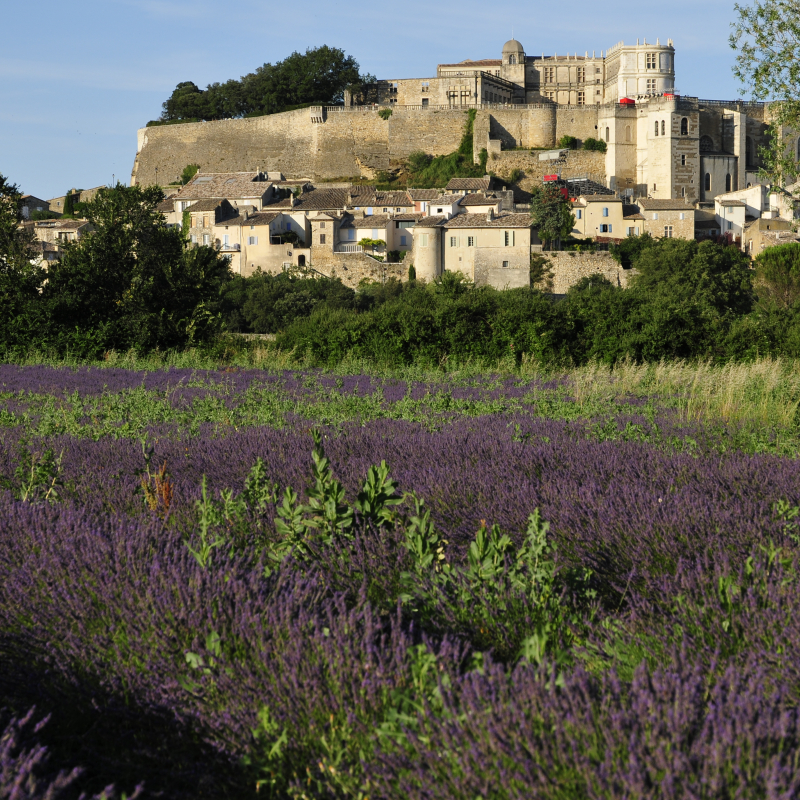Grignan
Drôme ()

L’Histoire de Grignan se confond le plus souvent avec l’histoire de son château et de ses résidences successives.
Le bourg castral, mentionné dès 1105, se développe aux XIIIe et XIVe siècles, avec le rôle grandissant de la puissante famille des Adhémar de Monteil, dont la branche cadette (les Adhémar de Grignan), possèdera définitivement la seigneurie dès 1239.
Le village, blotti au pied de son château, restera abrité à l’intérieur de ses remparts jusqu’à l’extrême fin du XVe siècle.
La première extension de l’agglomération interviendra au milieu du XVIe siècle, avec la création des Grand et Petit faubourgs, de la promenade et jeux du Mail (1550) et la construction, hors les murs, de la halle aux grains (1553), à l’emplacement actuel de la mairie.
De cette même époque datent encore l’édification de la Collégiale Saint-Sauveur (1535-1542) et les grands travaux d’embellissement du château (1543-1557) qui font de l’ancienne forteresse médiévale un remarquable palais de la Renaissance.
Le bourg et son château connaîtront d’autres heures de gloire au XVIIe siècle avec François de Castellane Adhémar, comte de Grignan, qui exerça pendant près d’un demi-siècle les fonctions de lieutenant général et de gouverneur de la Provence.
Son mariage avec Françoise Marguerite de Sévigné en 1669, sera à l’origine de la célèbre correspondance épistolaire échangée entre la marquise de Sévigné et sa fille, la comtesse de Grignan.
Dès le XVIIIe le souvenir de Mme de Sévigné et sa gloire littéraire naissante, sauveront le château de Grignan de la ruine et de l’oubli.
La modernisation du village aux XIXe et XXe siècles accompagnera le développement économique, tout en préservant la richesse de son patrimoine architectural et la qualité de ses paysages.
All year round, daily.
TarifsFree access.
Contact et accès 26230 GrignanDrôme (26)
Informations complémentaires
Ça peut vous intéresser


Château de Grignan


Chapelle St Vincent


Guided tour of Grignan


Fontaine et statue Sévigné


Le Four banal


Le Beffroi


Échappée provençale avec ma tribu

Expérience étoilée à Grignan

Lou Rabasso

Restaurant du Camping Les Truffières

Guided tour of Grignan

Restaurant de la Bastide de Grignan

La Vie de Château

La Moutière

Journée Exploration : Château de Grignan et Musée de la Lavande

Le Café des Vignerons

Domaine de Montine – Winegrowing estate

Salon de Thé – La Ferme Chapouton






